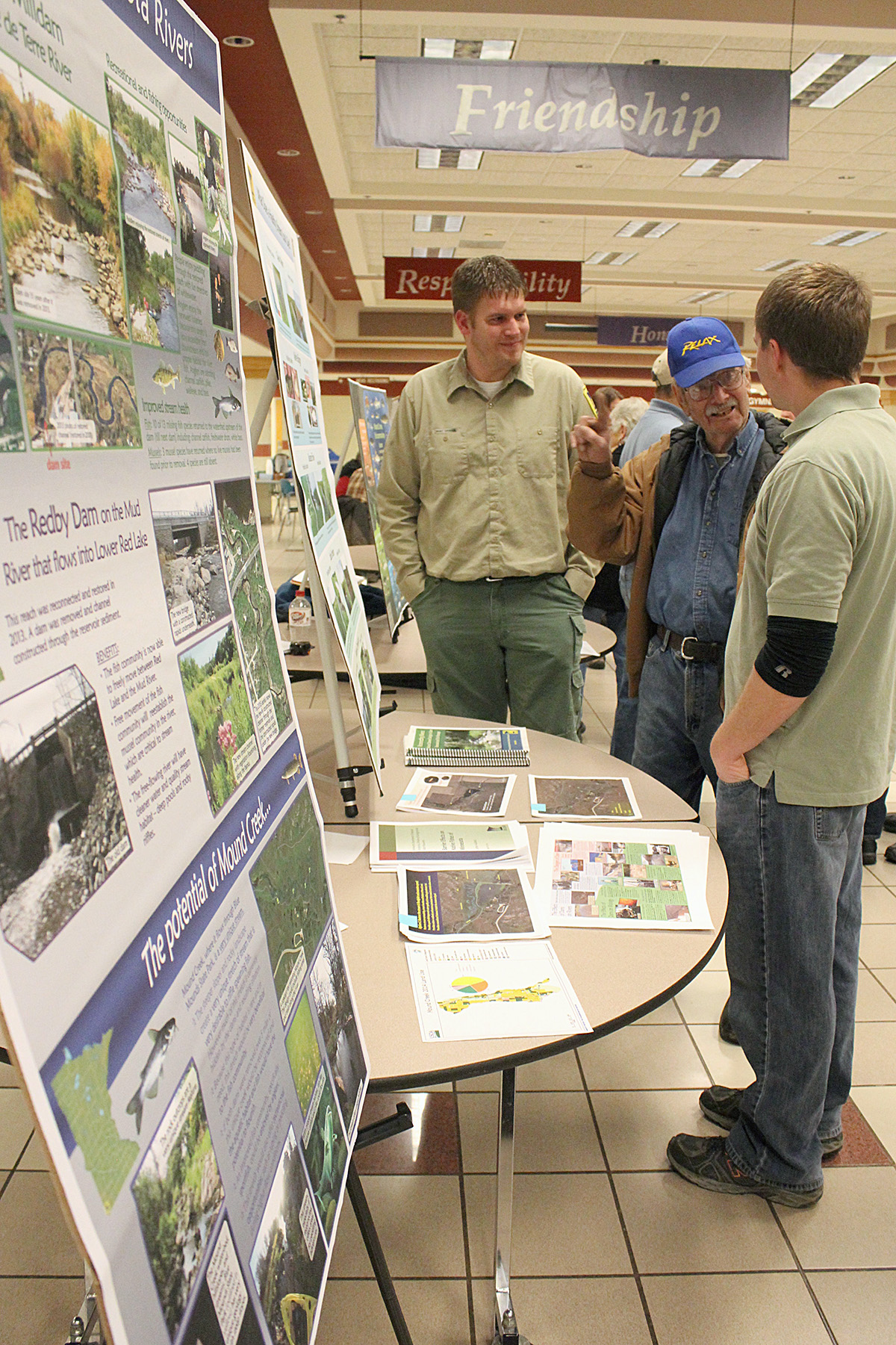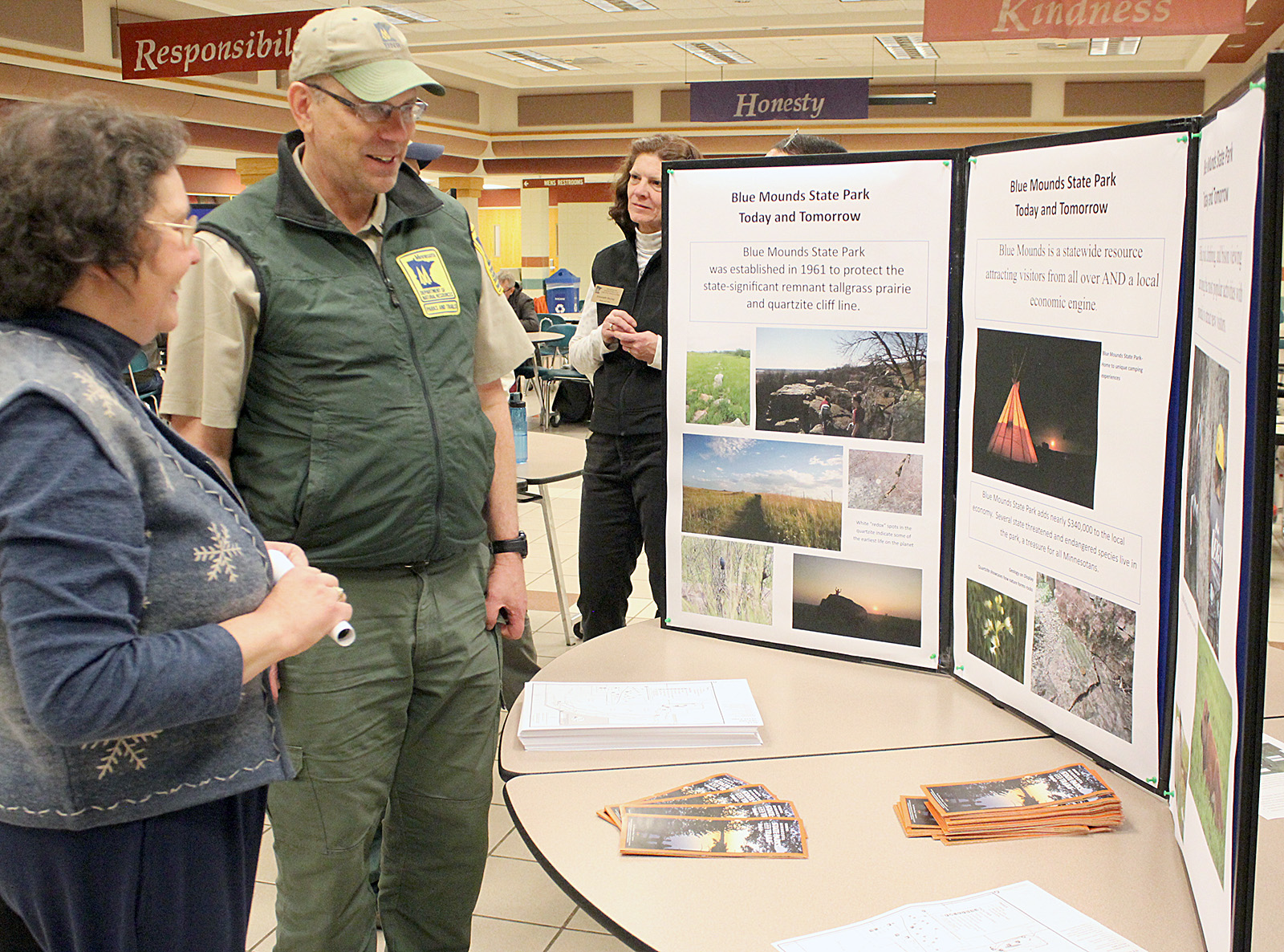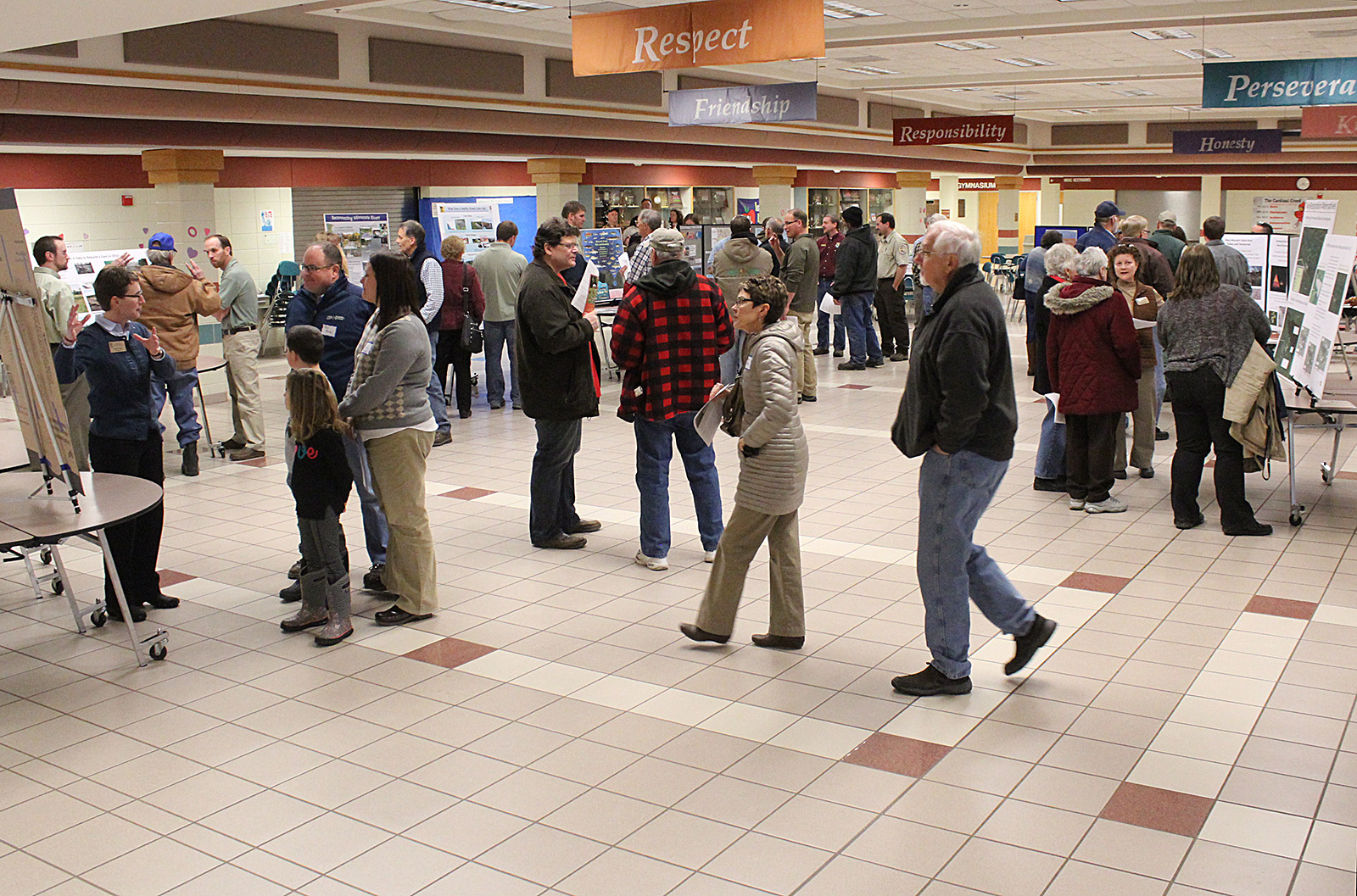 ,
,  ,
, 
More than 100 people attended the Feb. 9 meeting about the Blue Mounds State Park lake that drained when floodwaters tore through the dam in 2014.
Most showed up to voice their support for replacing the dam and beach, but they learned — and many came to understand — water quality was the broader issue.
Even before flood damage, the lake was impaired by bacteria and sedimentation from the watershed upstream.
In addition, E.coli has persistently shown up in park tap water, and the source of that contamination hasn’t yet been identified.
“You put a reservoir back in and you still have these problems,” said Ryan Doorenbos of DNR fisheries. “When the dam failed, it brought to the forefront the issue that the res was gone years ago because of sedimentation.”
Talking to people like Doorenbos and others helped drive home a point that wasn’t easily taken for local residents.
The Feb. 9 event was highly publicized ahead of the meeting, especially on social media.
No plan for a beach
“I urge you to let them know how important that lake has been to Rock County – the only county in the state without a natural lake,” Chamber Director Jane Wildung Lanphere wrote in an email to Chamber members prior to the meeting.
“Tell them to rebuild it and make the lake bigger and cleaner than ever.”
Citizens rallied on Facebook, many sharing fond memories of outings at the beach and paddling on the water.
“We paid taxes, and with our [FEMA] designation we should have our park and dam restored to its pre-flood condition,” Scott Wessels wrote on Facebook, urging residents to attend the meeting.
“If we want to keep our beach and dam, we need to have our voices heard; squeaky wheel gets the grease.”
Twelve experts with the Minnesota Department of Natural Resources and three from US Fish and Wildlife Service greeted residents in the Luverne Elementary commons Feb. 9.
Each of their stations offered a unique area of expertise, but essentially they presented two options.
We can replace the dam and lake for $6.1 million or restore the original meandering stream for $1.4 million. A third possible option would incorporate a little of both.
None of the options included a beach, which initially surprised people at the event.
“From a purely scenic value, I would like to see the lake restored,” said Kristin Suhr, a frequent Blue Mounds visitor and photographer.
“But I’m getting the feeling that they’re leaning toward restoring the park to its natural habitat.”
Suhr, Luverne, said she was impressed by the amount of scientific and engineering research the presenters brought to the meeting. “I appreciate all the work they’ve put into it,” she said.
And ultimately, Suhr said she feels more comfortable doing something that’s right for ecological health of the park than doing what park visitors want.
It’s all about clean water
According to experts at the meeting, it all comes down to water quality and addressing issues that plagued the area long before the 2014 flood.
For one thing, erosion upstream from the park has caused the lake to fill with sedimentation — several feet of muck under the surface of the already shallow water.
In addition, there is increasing concern over the safety of the water for swimming after bacteria and fecal matter have been repeatedly identified.
The flood-ravaged dam is a separate matter from the persistent E.coli in park tap water, a problem that officials have been unable to find the source of.
Doug Bos of the Rock County Land Management Office attended the Feb. 9 event to answer questions about watershed management.
The Mound Creek Watershed, which drains through the state park, has been targeted as impaired by pollution and sedimentation, and Bos is working with farmers to improve practices to protect water.
Bos agreed that the water discussion at the park is a good way to again shed light on the fact that upstream water quality affects everyone — including park visitors.
At the end of the day, many attendees said they would miss a swimming beach, but said they want to be good land stewards, too.
“This has been very eye-opening, and it’s been a good exchange of information,” said Blue Mounds State Park manager Chris Ingebretsen.
“I was of the opinion, ‘Give us our lake back,’ but now I’m not quite as ardent … There are a lot more issues besides the dam; we need to do what’s recreationally viable for the next 80 years.”
While there may be federal funds available to replace the dam structure, it’s not as simple as putting in the concrete, said Scott Roemhildt, DNR communications specialist.
“No matter what we do, it will be different than what was there,” he said.
“There are new standards for dams built today, and the question is how big of an impact those changes will have on the environment.”
Information about the Blue Mounds State Park water solutions is available on the DNR website at http://www.dnr.state.mn.us/state_parks/blue_mounds.
The online comment period closed Feb. 15, but Ingebretsen said he welcomes calls at the local office, 283-6050 or at chris.ingebretsen@state.mn.us.


